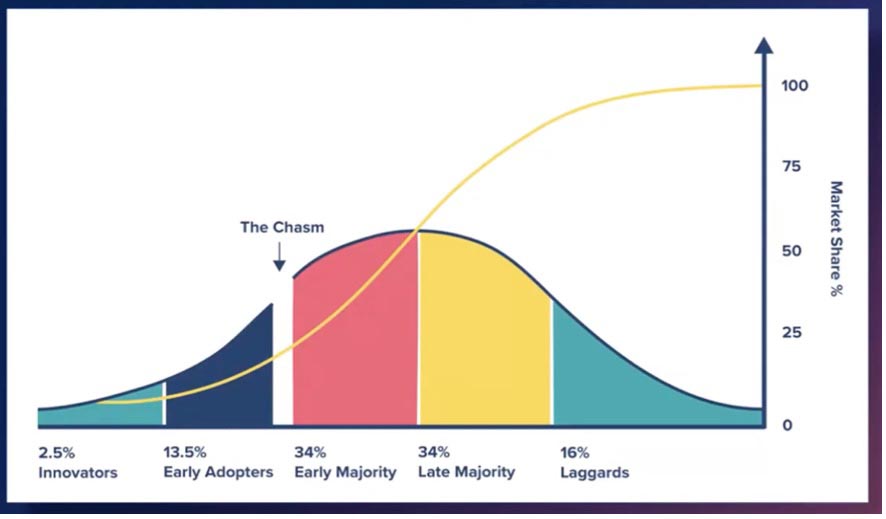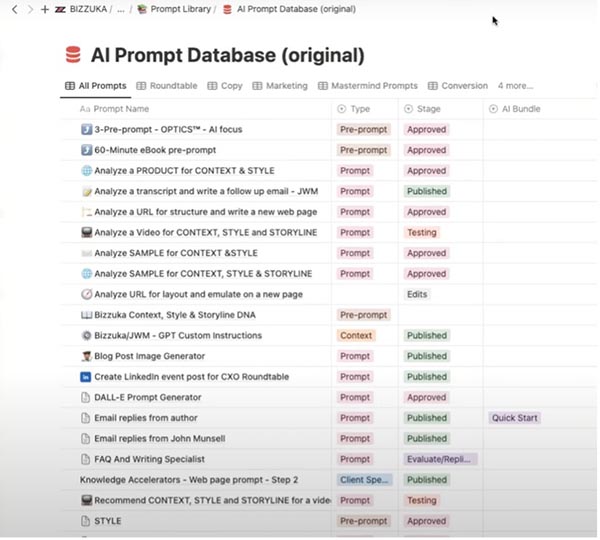On August 29, DirectMail2.0 put on a webinar that addressed a topic that has to be on the minds of most business owners these days. “How is AI going to impact my business? Should I be using it right now? If so, how?” This webinar “5 AI Hacks to Crush Your Competition” addressed these questions.
The webinar opened with Brad Kugler, CEO/co-founder of DirectMail2.0, giving an overview of what AI is and where it stands in the market today. This was followed by a presentation of hacks by John Munsell, CEO of Bizzuka (a company helping people implement AI in their marketing), who talked about how to use AI for day-to-day tasks in running your business.
While many people associate AI with “that creepy technology that makes things up,” Kugler explained that AI is simply a technology designed to learn on its own based on information it is given. “Computers aren’t smart on their own,” he says. “They only do what you’ve taught them to do. With machine learning, however, we can now teach computers to continue teaching themselves based on what you’re feeding them. With more questions and feedback, AI can actually correct its own mistakes and learn from all it’s been given.”
Although much of what we hear revolves around AI-generated copywriting, Kugler notes that AI has many other practical uses, many of which we almost take for granted. Among them:
- Static image recognition, classification, and tagging.
- Algorithmic trading strategy and performance improvement.
- Efficient, scalable processing of patient data.
- Predictive maintenance.
- Object identification, detection, classification, and tracking.
- Text query of images
- Automated geophysical feature detection.
- Content distribution on social media.
- Object detection and classification, avoidance, and navigation.
- Prevention of cybersecurity threats.
The data on the use of AI in business are stagging. According to McKinsey, enterprise use cases represent $6 trillion in opportunity, and IDC predicts that worldwide spending on AI will hit $98 billion this year. Gartner found that 75% of respondents felt that their businesses would be “transformed” by ASI within three years or less.
“If that’s the case, it behooves everyone here to learn about this technology and what its uses are,” says Kugler.

In terms of the technology adoption curve, Kugler likened it to e-commerce. “Twenty years ago, only early adopters were using online commerce,” he says. “Back then, most people were still afraid to put their credit cards into these systems and place orders. Today, anyone not doing it is a laggard. AI is on an even faster adoption curve.”
AI Becoming Increasingly Specialized
Kugler then handed the webinar over to Munsell, who opened by listing over a dozen AI platforms. Some, such as Alexa, Siri, and Tesla Autopilot, are more familiar than others. Increasingly, AI platforms are also becoming more and more specialized. While most of these have free versions, paid versions allow far more functionality, flexibility, and the ability to leverage AI at scale.
The investment, Munsell, points out, is worth it. Citing data from the Harvard Business Review:
- Businesses leveraging AI have seen a 61% reduction in costs and 53% increase in revenue.
- 84% marketing organizations are currently implementing or expanding use of AI.
- Three out of four C-suite executives believe that if they don’t scale AI, they risk going out of business.
HBR also found that companies using AI for sales were able to do the following:
- Increase leads by more than 50%
- Reduce call time by 60-70%
- Realize cost reductions of 40-60%
“This thing is moving faster than anything I’ve ever witnessed, so it’s important to get on board quickly,” he says.
AI Hacks You Can Use Now
Munsell then outlined multiple AI “hacks” that companies can use now. (The webinar promised five, but Munsell over-delivered.)
- Accelerate and improve direct response copywriting. (Examples: ChatGPT, Claude.ai, Copy.ai, Jasper.ai)
Munsell noted that, to improve conversion, you’ll need to write direct response copy, whether for clients or for your own businesses. “In today’s world, most people will have their first interaction with you online,” he says. “Even if they got something in the mail, their first move it to try to avoid a salesperson. So that direct mail needs to speak to them like your best salesperson would.”
The challenge for copywriting AI platforms like ChatGPT, however, is that they learn from what is available online, and 90% of what is written is not direct response copywriting. “That means that all the AI tools have been schooled on all of the copy out there is wrong,” Munsell cautions. “That’s why they need the guidance of very specific pre-written prompts.”
Out of these tools, Munsell’s favorite is Claude.ai, although he notes that once you learn how to use accurate prompts, ChatGPT can write good copy, as well.
Even so, if businesses are going to truly become more efficient and profitable, they have to create prompts that can create direct response copy at scale. “You can go on YouTube or anywhere, you can see prompts,” he says. “Those are beginning prompts, and they aren’t scalable inside the organization.” He then showed the audience his extensive table of his own detailed and highly tested copywriting prompts that use what he calls “stacked prompting and variable prompting.”
This allows him to create highly accurate and customizable direct marketing copy that can create content at scale.

“Say we are generating content for a specific set of customers based on competitive analysis,” he says. “We have a seven-step process. Using the stackable and variable prompts, we can solve for the recipient’s avatar, their features, their mistaken beliefs, and all that. We paste in their company URL (or multiple URLs) and it will pull all that data down to create emails at scale. All of that happens using ChatGPT.”
- Boost results from direct mail or email.
Other platforms are designed to create content based on research AI does on the target or target market. Take Lyne.ai, for example. If you want better responses, it’s important to establish some level of rapport at the opening line. Lyne.ai does that for you. “Lyne will look up someone’s profile in LinkedIn, look for something current relevant or interesting, and that will use that code in your opening line in your email or direct mail,” says Munsell. “Let’s say it sees that we both went to LSU. It will open with, ‘Hey John, Go Tigers!” It’s an ice breaker, and it’s driven by AI.”
- Unleash creativity with AI tools.
One of the many time-consuming aspects of content creation is artwork—finding the right image to add to blog posts, direct mail pieces, presentations, and so on. Instead of spending hours combining through photo libraries, Munsell says, you can use AI tools to create exactly what you want. Likewise, you can use tools to generate videos from blog posts, take long videos and crunch them down to 1-2 minute TikTok videos, and more.
Among the tools you can use:
- MidJourney
- Photoshop
- Lumen5.com
- Steve.ai
- Visla.us
- Runwayml.com
- Invideo.io
- Munch.com
All of the highly unique, creative images used in Munsell’s presentation were created using AI.

Munsell also gave examples of AI-generated videos created by copying and pasting one New Orleans client’s “about us” section from its website, then adding additional prompts related to direct mail. “Three minutes later, it had created a three-minute YouTube short, with real video clips, and wrote its own script. It pulled footage from New Orleans, from print shops, and pieces of direct mail, and it wrote a really good script. I had even specified that the voiceover be in a Southern accent.”
For animation, he has used Steve.ai.
Want to create tons of social media content? Take your video feed, throw it into Munch, it will pull one- to two-minute segments and the into TikTok videos.
- Fine tune lead quality.
AI is also leading the way in improving the ability to generate high-quality leads. Platforms such as Apollo.io, OpenLead.ai, Woodpecker.co, HelloTars.com, and LivePerson.com do everything from using AI to comb the Internet to find relevant leads to adding vertical-market-specific chatbots.
“Say I’m looking for someone looking for digital marketing services. AI will look at it and find potential buyers exhibiting buying intent,” Munsell says, noting that these platforms are far more accurate when targeting general consumer targets than highly specific market niches—at least at present.
Another cool marketing boost is the ability to generate personalized video clips of you introducing yourself to a prospect at scale. Munsell gives the example: “Hi, Bill. I understand a lot about your business. I know we can help you do XYZ better.” Now take a clip of yourself greeting the prospect by name, with the prospect’s website green screened behind you. Upload the database, and AI inserts the prospect’s name and company URL into each video—while conforming your lips to the correct shapes as you speak: “Hello, John.” “Hello Zuri.” “Hello Lynda.”
- Craft winning proposals.
Want to craft winning proposals? Upload information into an AI platform—customer name, budget, costs, and other data—and tell it what you want it to do. For example, Munsell uploaded a file’s worth of customer data, including the ballpark budget, for a direct mail program for the following year. He then took the whole thing, put it into ChatGPT, and turned on the code interpreter. “I told ChatGPT, ‘Put this in a table so I can understand it. Then I said, ‘Can you make it into a spreadsheet I can download it?’ Then I started looking at it,” Munsell says. “I noted that his average sale is $3,500. I went to ChatGPT and said, ‘If the average sale is $3,500. I want you to calculate ROI on this proposal. It did and used it to craft the proposal.”
- Maximizing profitability with customer analytics.
AI is also highly useful in analyzing databases to find correlations that you couldn’t find by hand. Using a product such as Pecan.ai, you can say, if they buy product A, there is a high likelihood that they will buy product B. “You want to know, in this data is there gold?” says Munsell. “Is there a type of customer that we should be targeting where we can really do better? But we don't know because it’s one customer out of all of them.”
That’s where AI comes in. In milliseconds, it can find correlations where human beings can’t.
Other ways to maximize profitability are with supply chain analytics (throughput.world allows you to anticipate problems in the supply chain based on weather patterns and other data), and business automation (Uipath.com).
Walking away from the webinar, attendees could only be left with the conclusion that AI holds the keys to an entirely new way of doing business. Not just keys, but perhaps a sledgehammer. Truly, based on the ability of AI to truly transform direct response marketing at all levels, it may be a “do or die” proposition. As Kugler so eloquently put it, “Learn it or get run over by it.”















Discussion
Join the discussion Sign In or Become a Member, doing so is simple and free